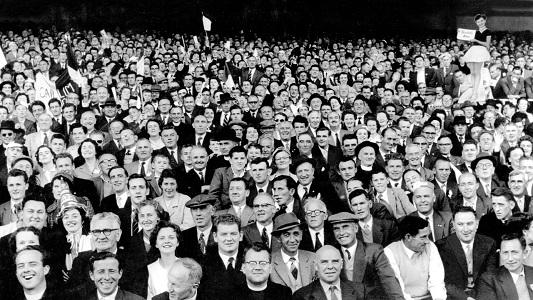WILL GALWAY BEAT MAYO?

by Tom Kenny
The rivalry between Galway and Mayo is as old as the provincial championship itself. The Connacht GAA Council was actually founded on the same day that Galway and Mayo contested the first ‘official’ Connacht senior football final. That game was played in Claremorris in November 1902 and was won by Mayo. Galway played “with the wind and the incline” in the first half while the vast crowd agreed to ‘keep strictly outside the field of play’, something the organisers clearly regarded as an unexpected bonus.
As the teams were leaving the field, J.B. McDonagh from St. Mary’s in Dunmore sought out Frank Reilly, the captain of the Ballina Stephenites and said “If you can raise a team in Ballina to meet Dunmore, I will present the victors with a set of medals”. That early challenge between the two dominant clubs in Connacht did much – in the words o The Western People –to promote a feeling of comradeship between the Gaels of Mayo and Galway. There might be fierce rivalry on the field, but there was also a sense of kinship off it, a ready acknowledgement that the people of both counties – be they small farmers, fishermen or emigrants – faced many of the same challenges.
Despite many notable battles at provincial level, both Mayo and Galway struggled to make the breakthrough on the national stage in the next two decades, each losing two All-Ireland finals – Mayo in 1916 and 1921, Galway in 1919 and 1922. Galway eventually won it in 1925, ironically at the expense of Mayo after some extraordinary machinations of the championship of that year.
The 1930’s was the golden age of Gaelic football in Connacht. Galway and Mayo contested 8 successive senior finals and the teams shared those 8 championships. Mayo won the All-Ireland in 1936 and again in 1950 and 1951; Galway won in 1934, 1938, 1956, 1964, 1965 and 1966.
Every county in Connacht showed a progressive decrease in population in each decade from 1841 to 1946. The combined loss in Mayo and Galway in that time was almost half a million persons. The 1950’s were bleak times economically, some 40,000 people departed Galway and Mayo in the 15 years to 1966. Football was one of the few bright stars during that period.
In a remarkable book just published entitled “Will Galway Beat Mayo? How a 1960’s GAA rivalry reawakened the West”, James Laffey has used all his journalistic and research skills to describe many of the clashes between the counties over an extended period, but he goes beyond football to chronicle the fascinating sporting story in the context of an era of sweeping change as the west began to find its voice. It is an outstanding sports book but also an important socio-economic history. Through a series of interviews with, and profiles of many sporting legends, James Laffey describes the impact on the west of the evacuation of islands, the construction of ballrooms, the organisation of carnivals, the advent of black and white television, clerical influences on sport, hurricane Debbie, Tynagh Mines, Clann na Talmhain etc. The book is profusely illustrated and is an unusual mixture of sport and social history. As a Galway reader, I have to say it is written without a hint of bias.
Very highly recommended. In good bookshops @ 25 euro.
Our photograph (courtesy of ex Galway footballer Cyril Dunne) is of a group of Galway supporters in the old Hogan Stand at the 1956 All-Ireland final. Cyril and his brother are in the crowd, do you recognise anyone else?
